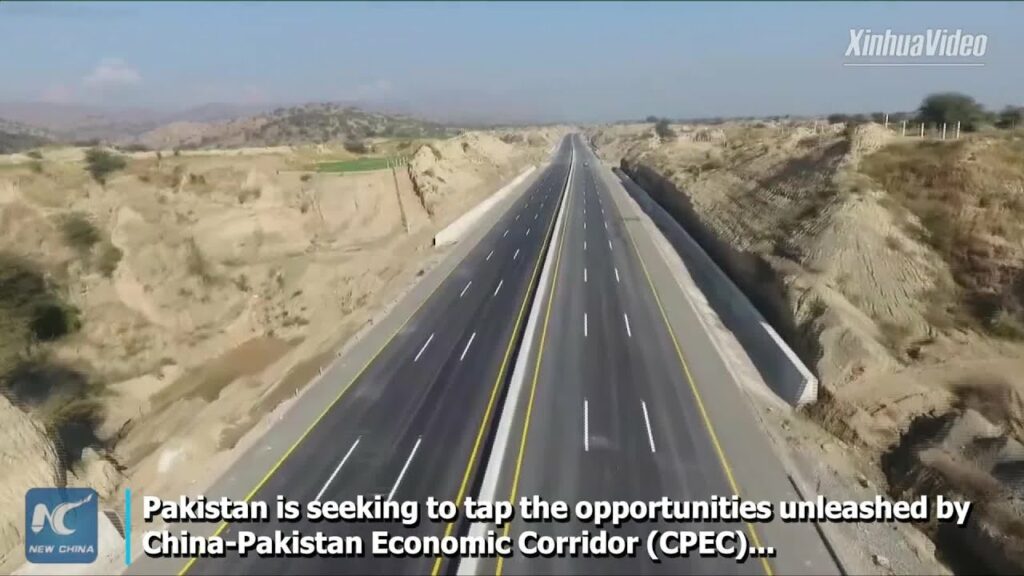NEW DELHI, Feb 4: Pakistan on Friday signed a new agreement with China to begin the second phase of the 60 billion dollar China-Pakistan Economic Corridor (CPEC) during prime minister Imran Khan’s visit to China.
Khan showered high praises on the controversial project CPEC and said it had strategic significance for both the countries and delivering tangible benefits to the people.
Khan, who arrived in China on Thursday on a four-day visit to attend the opening ceremony of the 2020 Beijing Winter Olympics and meet the top Chinese leadership, held a virtual meeting with He Lifeng, the Chairman of China’s apex planning body — the National Development and Reform Commission (NDRC) on Friday to discuss the expansion of Chinese investments in Pakistan.
Pakistan’s State Minister and Chairman of Board of Investment Muhammad Azfar Ahsan and He Lifeng signed the Framework Agreement on Industrial Cooperation which aimed attracting Foreign Direct Investment (FDI), promote industrialisation and development of economic zones, and initiate, plan, execute and monitor projects, both in public as well as private sector, Pakistani media reports said.
Addressing the meeting, Khan, who was a critic of the CPEC before he came to power for its secrecy and uneven investments neglecting certain provinces of the country, noted that the CPEC’s early-harvest projects had transformed Pakistan’s economic landscape, thus laying a solid foundation for sustainable economic growth.
During the meeting, both sides reviewed the progress of ongoing CPEC projects and discussed the preparations for future initiatives, it said. Addressing the Chinese criticism of delay in projects, Khan, who prior to his visit ordered the removal of 37 regulations hindering the pace of the CPEC projects, reaffirmed the commitment of the two sides to their timely completion.
The ambitious CPEC is a 3,000-km long route of infrastructure projects connecting China’s northwest Xinjiang Uygur Autonomous Region and the Gwadar Port in the western province of Baluchistan in Pakistan.
India has protested to China over the CPEC as it is being laid through the Pakistan-occupied Kashmir (PoK). Khan is in China with a large high-level delegation comprising Foreign Minister Shah Mahmood Qureshi, Finance Minister Shaukat Tarin, Planning Minister Asad Umar, Information Minister Fawad Chaudhry, National Security Advisor Moeed Yousaf, Commerce Advisor Abdul Razak Dawood and Special Assistant on CPEC Khalid Mansoor.
He is due to hold meetings with Chinese President Xi Jinping and Premier Li Keqiang. As CPEC entered its second phase which primarily revolves around Special Economic Zones (SEZs) development and industrialisation, the need for a comprehensive Framework Agreement became imperative, the report said.
Last year, a report by US-based international development research lab AidData had said a substantial chunk of Chinese development financing under the CPEC consists of loans that are at or near commercial rates as opposed to grants. According to the report, excerpts of which was carried by prominent Pakistani daily Dawn, Pakistan received about half of all Chinese development finance in the form of “export buyer’s credit”, i.e. money lent by Chinese institutions to Pakistan in order to facilitate the purchase of equipment and goods to be bought by Chinese implementation partners.
As much as 40 per cent of China’s lending to Pakistan do not appear on the government’s books “for the most part”, the report said.
In its editorial on the AidData report, Dawn said the nature of Chinese financing for infrastructure schemes under the CPEC initiative calls for a greater transparency in the projects being executed here since 2015. “In fact, the PTI (the ruling Pakistan Tehreek-e-Insaf party headed by Khan) when in opposition, had demanded complete transparency in CPEC investments.
“But now in government, it has done nothing to make public the costs or conditions of the CPEC deals with China’s government, companies and banks, keeping the matter strictly under wraps just as its predecessor had done,” the editorial published in September last year had said.
It further said “the bulk of Chinese financing for CPEC schemes comprises expensive commercial loans isn’t the only worrisome aspect. What is more troubling is that as much as 40 per cent of Chinese loans have been disbursed in a way that blurs the distinction between private and public debt, ‘doing away’ with the need for its disclosure as public debt”.
“Further, Islamabad has given an ‘explicit or implicit… government liability protection’ to Chinese investors in the form of sovereign guarantees or guaranteed returns on equity.
“Then, about half of all Chinese finance has come in the form of ‘export buyer’s credit’ or the money lent by Chinese institutions to Pakistan to facilitate the purchase of equipment and goods to be bought by Chinese implementation partners’, besides awarding contracts to Chinese, without competitive international bidding,” the editorial added.
(Manas Dasgupta)

